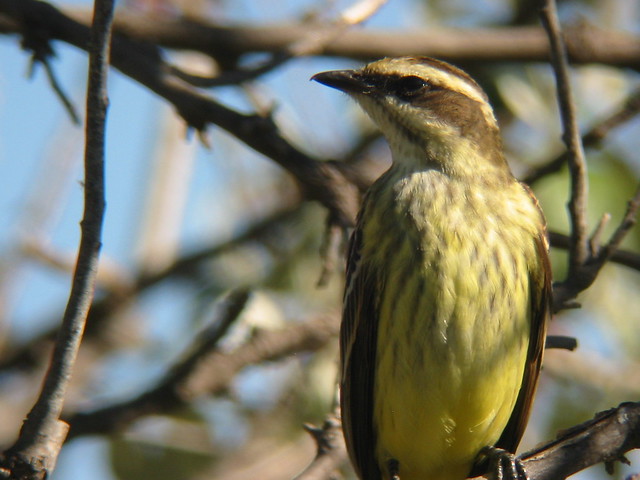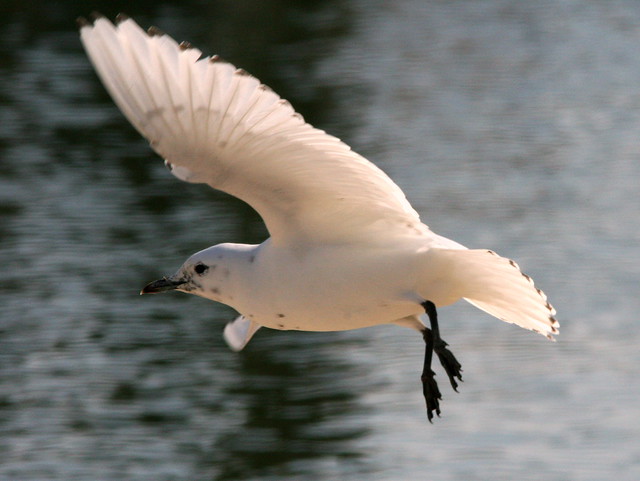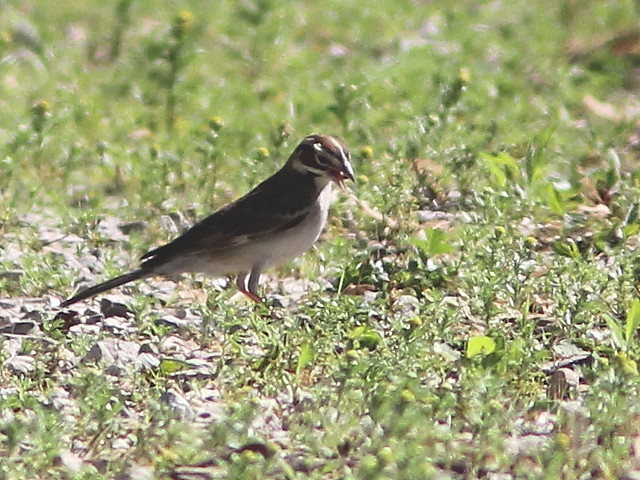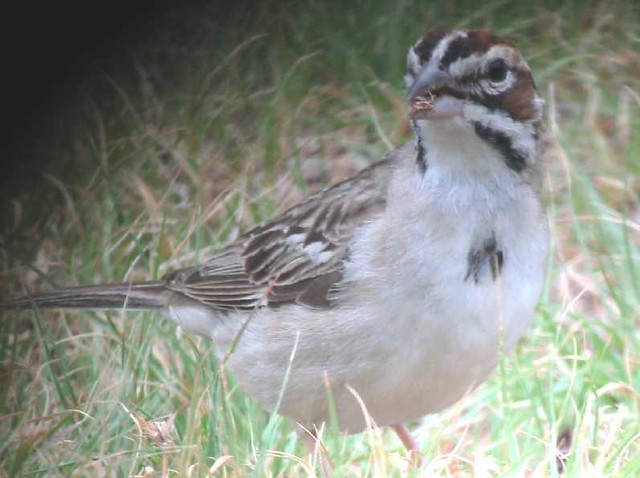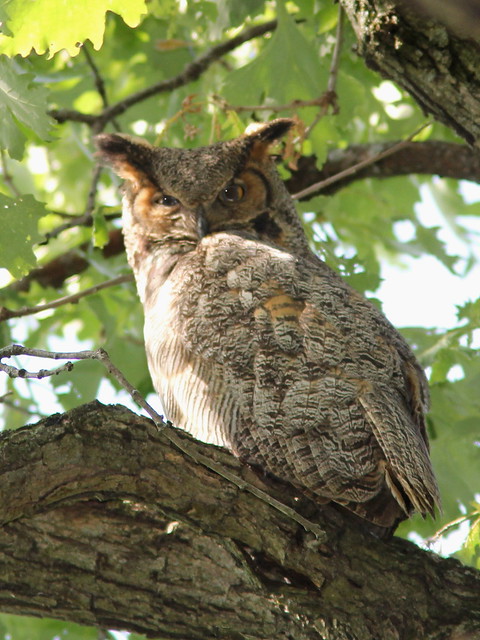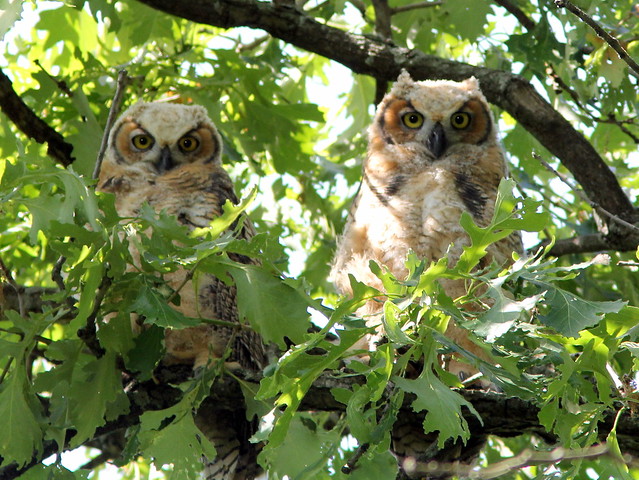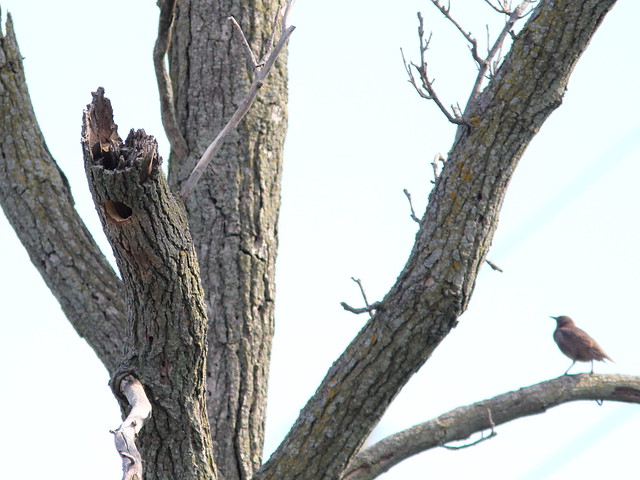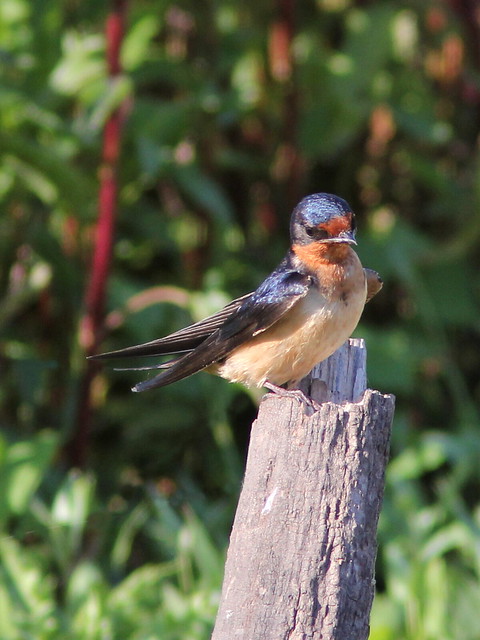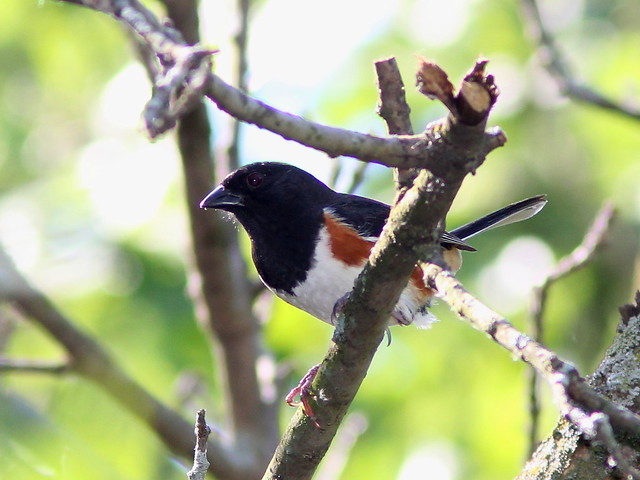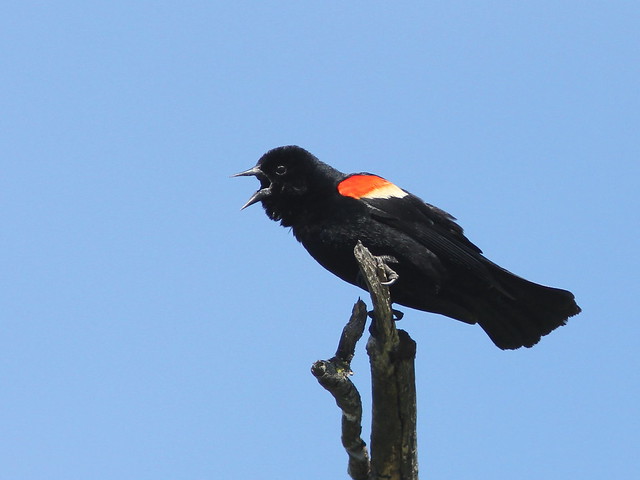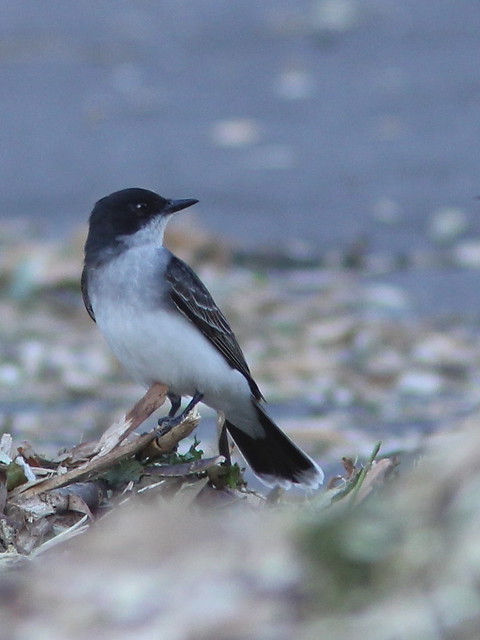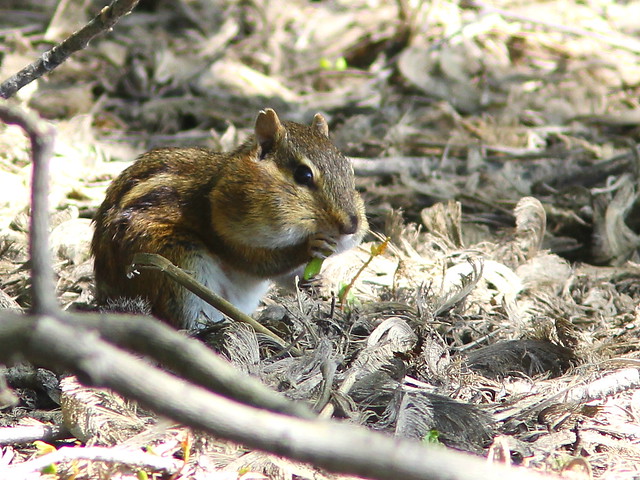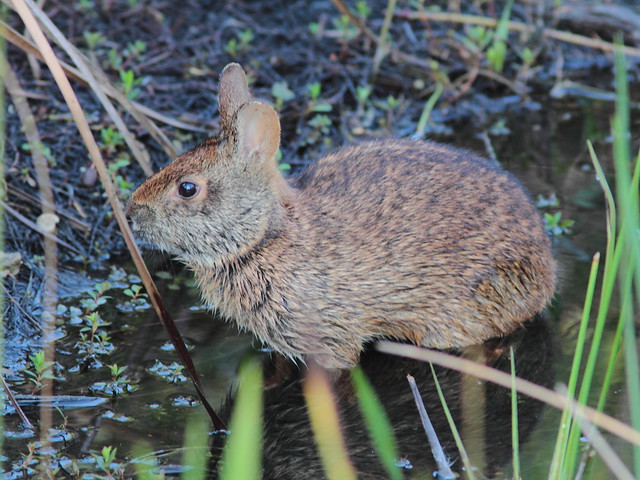Posted by: Ken @ 9:23 am
Most of my posts attest to the fact that I do not range far and wide in search of rare or uncommon birds. It’s not that I lack interest in putting a few new notches in my birding belt. If an unusual bird is reported and it is reasonably nearby, I will make an effort to see it, but I’ve never been one to jump on a plane or drive overnight to join the “twitchers” who congregate in hopes of adding a new species to their life/year/locality lists.
Some of our “rare” bird sightings were incidental to trips we had taken for non-birding reasons. I think of the Piratic Flycatcher that showed up in Fort Sumner, New Mexico just as I was setting out to drive from Albuquerque to Amarillo to visit our son and his family. We diverted from I-40 and lost about an hour of travel time to see it. My digiscoped image of this vagrant from Mexico was taken with a little 2.4 megapixel point-and-shoot camera back in 2003, long before I acquired my first DSLR.
Then, in 2009 there was an Ivory Gull that appeared in Cape May, New Jersey, and was only seen during the week that we flew there for the funeral of my uncle.
In the spring of 2010 we picked up another life bird when local birders found a Ruff that showed up at Nelson Lake Marsh/Dick Young Forest Preserve near our Illinois condo. My photos of the sandpiper, seen here in the foreground, foraging with several Lesser Yellowlegs, were only good enough to document the larger Ruff’s “pot belly,” more upright posture, and drooping bill that set it apart. I must admit that we likely would not have located the bird, much less identified it, without the help of a couple of experts who happened to be there when we followed up on the report. It was my ABA Area Life Bird #572, and Mary Lou’s #505. As evidence of our slow progress to the coveted 600 mark, we now have only advanced to 581 and 509 species respectively.
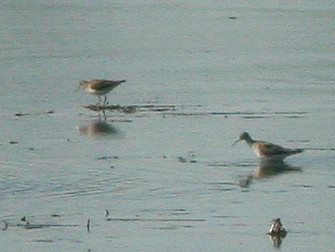
This past May 15, while Mary Lou and I were birding Lippold Park in neighboring Batavia we saw three or four sparrows and two robins foraging on the trail some distance ahead. All but one of the sparrows were Song Sparrows, but one seemed longer and slimmer and walked instead of hopping. About all we could make out with the binoculars was a strong line over its eye that suggested it was a Lark Sparrow. I took several photos that confirmed its identity. According to eBird, this was the first of this species ever reported from Batavia or any of the neighboring Illinois communities in 10 or more years. Because of the distance, the quality of the photo is poor.
Lark Sparrows are more common in the Western states. Here is another bad shot of one on our lawn in New Mexico, digiscoped through the living room window about 10 years ago.
We watch the local sightings reports, and during the past two weeks we followed up, rather tardily, on a couple of interesting, if not rare, birds.
A Great Horned Owl with two youngsters had been seen roosting the the large oaks in nearby Fabyan Forest Preserve. They were still there despite our delay in searching for them, and they provided a nice photo opportunity.
The owlets were mostly obscured high in the foliage, but they did crane their necks to get a better look at us.
In the case of another recent report of a species that I had not yet photographed, it seems we waited too long after the first sighting. A pair of Red-headed Woodpeckers had been seen courting in an old tree only 3-4 miles from our home. For the past two mornings we spent over an hour observing the nest that the birds had excavated, but there was no sign of them. Perhaps the female was now incubating out of sight, or worse, they had been evicted by some of the European Starlings that were present in large flocks.
All I have to show for our efforts is a photo of their hole with a starling on a nearby branch. Of course we will be back and maybe can report better news about the couple. While a few starlings did roost on the tree, none entered the nest hole, so this may be a sign that the female woodpecker is sitting on eggs.
Our unsuccessful quest tor the Red-headed Woodpecker wasn’t just a “dry hole,” as there were other interesting wild creatures in the vicinity. This Barn Swallow struck a nice pose.
A noisy Eastern Towhee briefly emerged from a secluded perch.
This Red-winged Blackbird added color to the scene as, in song, it displayed its expanded epaulets.
Eastern Kingbirds were gathered in a nearby tree. This one was picking through the grass, probably looking for nest material.
A Killdeer eyed us suspiciously from the shore of the river.
This Chipmunk looks as if it could not stuff one more seed into its cheek pouches.
Eastern Cottontail Rabbits in Illinois appear long-legged and muscular in comparison to…
…the aquatic coastal Florida subspecies of cottontails, little short-eared and dark-furred bunnies known as Marsh Rabbits.













